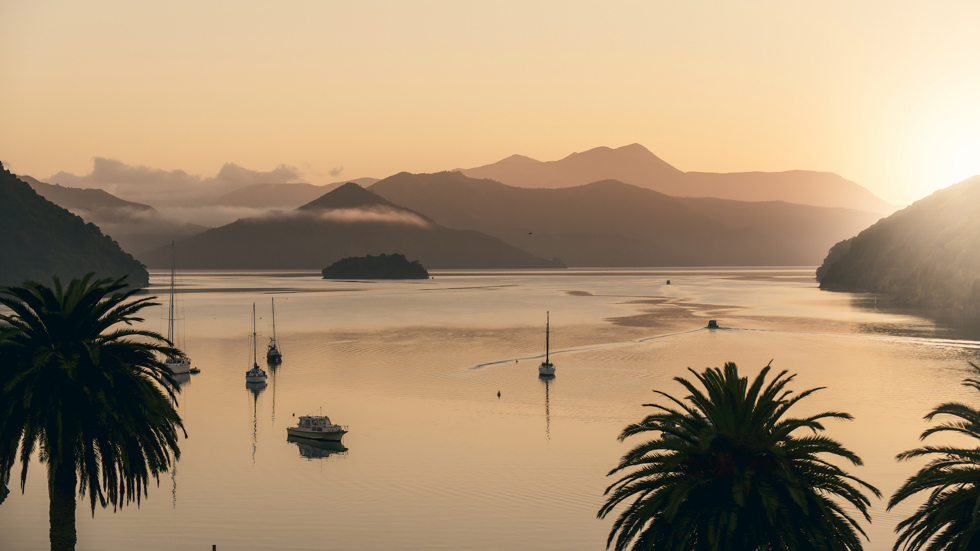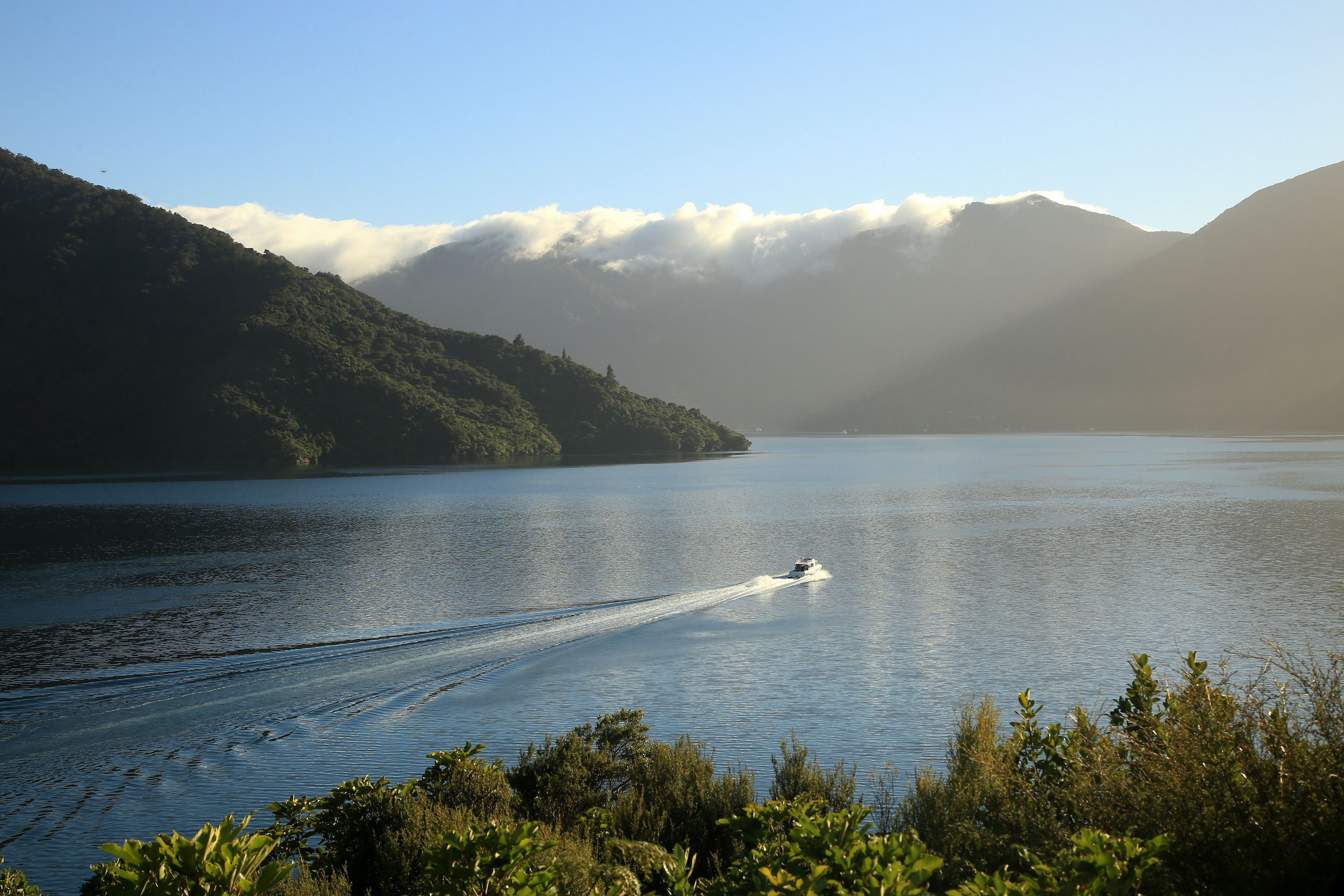Located at the north-east corner of the South Island, the Marlborough Sounds comprises of three main sounds: Queen Charlotte Sound/Tōtaranui, Kenepuru Sound and Pelorus Sound/Te Hoiere, as well as many other minor sounds including Mahau Sound and inlets and bays.
The main towns in the Marlborough Sounds are Picton and Havelock, with many smaller settlements, isolated homes and farms scattered to the furthest reaches of the Sounds – some without road access.
With about 4,000km2 of coastline, the Marlborough Sounds comprises one-fifth of the total length of New Zealand’s coast. It supports a rich population of marine wildlife, including seals, dolphins, penguins, stingrays, rare sea birds and the odd visiting whale.
The largest of the sounds, Pelorus Sound/Te Hoiere stretches about 55km from Cook Strait to Havelock, with 380km of shoreline. Much of the Sound can only be reached by sea, and many residents live far from the nearest road and powerline.
Early Māori favoured the Marlborough Sounds for its shelter and rich food sources. In Queen Charlotte Sound/Tōtaranui, Captain James Cook also took advantage of its resources and anchored in Ship Cove/Meretoto several times in the 1770s during his explorations of New Zealand. This marked one of the earliest encounters between Europeans and Māori.
Later, European settlement brought farming, mining and whaling to the Marlborough Sounds.
Today, one of the Marlborough Sounds’ main industries is aquaculture and the region is well-known for its Greenshell mussels, King salmon and clams.
Increasingly, areas of the Marlborough Sounds are being turned into conservation reserves, largely driven by volunteers who work to create pockets of regenerating native bush, predator-free islands and peninsulas supporting rare native wildlife.



